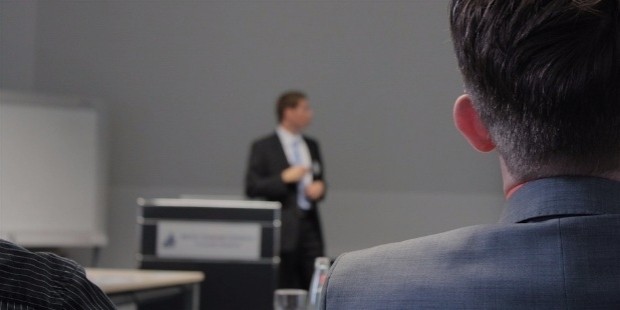Be Highly Successful: 9 Body Language Secrets of Exceptional People

Body language plays a silent role in defining who you are and the kind of personality you possess. The effective use of body language plays a key role in communication. It is a kind of non-verbal communication, where thoughts, intentions, or feelings are expressed by physical behaviours, such as facial expressions, body posture, gestures, eye movement, touch and the use of space.
Hence, it’s extremely important to have a controlled body language at various situations. Research among more than a million people shows that the upper echelons of top performance are filled with people who are high in emotional intelligence (90% of top performers, to be exact). These people know the power that unspoken signals have in communication and they monitor their own body language accordingly.
Here are 9 secrets which you can follow to control your body language like a successful person.
1. To increase participation, look like you’re listening
Benefits of Being a Good Listener
If you want people to express themselves, don’t multi-task while they do. Avoid the temptation to check your text messages, your watch, or how the other participants are reacting. Instead, focus on those who are speaking by facing them directly and making eye contact. Leaning forward, nodding, and tilting your head are other non-verbal ways to show you’re engaged and paying attention. It’s important to listen to people. It’s just as important to make sure they know you are listening.
2. To boost your confidence, assume a power pose
Research at Harvard and Columbia Business Schools shows that simply holding your body in expansive, “high-power” poses (leaning back with hands behind the head and feet up on a desk, or standing with legs and arms stretched wide open) for as little as two minutes stimulates higher levels of testosterone—the hormone linked to power and dominance—and lower levels of cortisol, a stress hormone.
3. To encourage collaboration, remove barriers
Physical obstructions are especially detrimental to collaborative efforts. Take away anything that blocks your view or forms a barrier between you and the rest of the team. Even during a coffee break, be aware that you may create a barrier by holding your cup and saucer in a way that seems deliberately to block your body or distance you from others.
4. To connect instantly with someone, shake hands
Touch is the most primitive and powerful non-verbal cue. Touching someone on the arm, hand, or shoulder for as little as 1/40 of a second creates a human bond. In the workplace, physical touch and warmth are established through the hand-shaking tradition, and this tactile contact makes a lasting and positive impression.
5. To stimulate good feelings, smile
A genuine smile not only stimulates your own sense of well-being, it also tells those around you that you are approachable, cooperative, and trustworthy. Most importantly, smiling directly influences how other people respond to you. When you smile at someone, they almost always smile in return. And, because facial expressions trigger corresponding feelings, the smile you get back actually changes that person’s emotional state in a positive direction.
6. To improve your speech, use your hands
Brain imaging has shown that a region called Broca’s area, which is important for speech production, is active not only when we’re talking, but when we wave our hands. Since gesture is integrally linked to speech, gesturing as we talk can actually power up our thinking.
7. To show agreement, mirror expressions and postures
When clients or business colleagues unconsciously imitate your body language, it’s their way of non-verbally saying that they like or agree with you. When you mirror other people with intent, it can be an important part of building rapport and nurturing feelings of mutuality. Mirroring starts by observing a person’s facial and body gestures and then subtly letting your body take on similar expressions and postures. Doing so will make the other person feel understood and accepted.
8. To sound authoritative, keep your voice down
Before a speech or important telephone call, allow your voice to relax into its optimal pitch (a technique I learned from a speech therapist) by keeping your lips together and making the sounds “um hum, um hum, um hum.” And if you are a female, ensure that your voice doesn’t rise at the end of sentences as if you are asking a question or seeking approval. Instead, when stating your opinion, use the authoritative arc, in which your voice starts on one note, rises in pitch through the sentence and drops back down at the end.
9. To improve your memory, uncross your arms and legs
Body language researchers Allan and Barbara Pease report a fascinating finding from one of their studies: When a group of volunteers attended a lecture and sat with unfolded arms and legs, they remembered 38% more than a group that attended the same lecture and sat with folded arms and legs. To improve your retention, uncross your arms and legs. If you see your audience exhibiting defensive body language, change tactics, take a break, or get them to move—and don’t try to persuade them until their bodies open up.
The above tips in controlling body language is matter of practice and you can master the art quite easily. Don’t be cautious about your body language, let it flow normally and practice will surely make those moves perfect and master the art of body language.



















